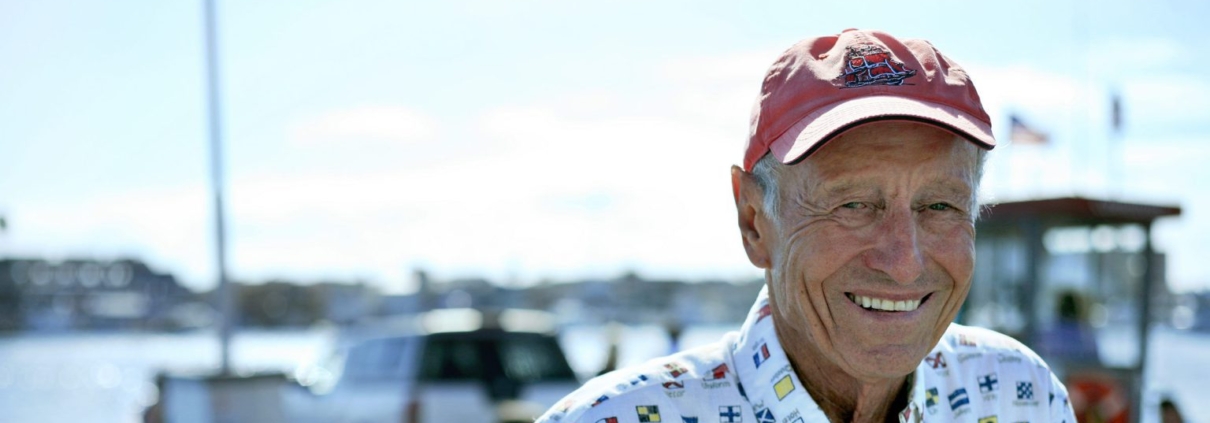In its infinite wisdom, state agency issues mandate that could ultimately sink the ferry operation
By Gary Sherwin – March 10, 2023
Source: Stu News Newport In its infinite wisdom, state agency issues 031023
The Balboa Island Ferry, one of our most iconic Newport Beach tourism experiences, could be no more.
If that sounds dramatic, it is. I can’t imagine our city without the ferry, but unless something is done, this treasured piece of our city could be gone in less than two years.
Thousands of locals and visitors use the ferry every year and it’s a vital part of our culture and history. It is part of what makes us Newport Beach, and in my mind, it is as important as our beaches. But all of that is now threatened and could be lost.
In another example of bureaucratic overreach, the California Air Resources Board (CARB) has mandated that all short run ferries in the state, mostly small privately held businesses, convert to electric engines by December 2025.
The state has been the nation’s leader in moving all motor vehicles to electric energy for a few years now and cleaner more efficient ferries sounds like a noble thing. Everyone likes less pollutants. But as always, the devil is in the details.
But California government officials, particularly unelected bureaucrats like CARB, like to make unfunded mandates on businesses. Our state is guilty of doing that all the time. And in this case, they have mandated a doozy.
I spoke with ferry owner Seymour Beek this week after being alerted to the issue by newly elected Assemblywoman Diane Dixon. She indicated that CARB is requiring all vessels to switch to electric engines and they are offering no assistance to do this.
To give you an idea of how expensive this process is, Beek told me that to engineer and then convert just one of his three ferries, it would cost $2.5 million. Once the design is set, the other ferries would cost another $1 million each. That’s $4.5 million if you are counting.
However, the ferries only generate about $2 million a year total. Add it up, and it doesn’t make sense for a business to stay afloat especially when you are only charging $1.50 a rider.
Beek is intent on saving the ferry and is discussing ways to address the problem with grants from agencies like the Air Quality Resource Board, but that is far from certain.
Aside from the cost, the other challenge is that it isn’t easy to physically convert these ferries. Beek said there is no off-the-shelf product he can purchase to install. That means he needs a custom-built system. He’s contacted several engineering firms, but they don’t even want to look at the project due to its complexity.
“These are old flat bottom barges and there isn’t much room to install anything. No one wants to touch it.” Beek said.
Retrofitting the ferries with new electric engines is one thing. However, he would also need to install charging stations at the docks and bring in new wiring, which would be another $500,000.
But if you are an environmentalist, you might see these dirty diesel engines as a problem for public health. Fair enough. However, how much gas do the ferries burn? About 23 gallons a day or the same as a mid-sized car. In fact, if the ferry wasn’t around, it is likely that lots more gas would be burned as more visitors choose to drive around the peninsula and Balboa Island instead of using the ferry.
Where is the common sense in all of this? Apparently not in Sacramento.
What is also galling is that the state is giving auto manufacturers until 2035 to go electric in the state. Why they are making the ferry do it 10 years earlier seems ridiculous. GM and Ford say they are still developing technology to fulfill the mandate, but no one is granting any grace to the locally owned ferries.
Even boat charters have been mandated to convert, such as Newport Landing, but after some lobbying, even they were granted more time.
So, what is the solution? First, let’s agree that there is no way we can lose the ferry, and this is an all-hands-on-deck emergency. However, there are a few options to consider.
The easiest and most obvious would be for the bureaucrats at CARB to realize that these ferries are not major polluters and exempt them from going all electric. Another way would be to give the 13 short haul ferries in the state more time to comply with the regulations, perhaps another 10 years like auto manufacturers. This would also allow technology to catch up so that battery prices can come down and permit our ferry some time to figure out the engineering challenges.
Batteries are also heavy, which also compromises stability and that means new calculations on how the ferries are used and how many cars you can put on it. More time would also allow battery technology to catch up and create a lighter version.
It would also be nice if the state could assist these small businesses with some grants to make conversion happen since they are making the mandate in the first place.
Another option, which Dixon has said she would be interested in championing, is introducing legislation to exempt our ferry from CARB compliance altogether.
There are also other solutions, such as asking the ferry to install Tier 3 engines which are more affordable, cleaner burning and could fit into the existing ferry structure. However, Beek said that CARB apparently isn’t even interested in those discussions. They are committed to everything going electric.
As Beek explained to me, the ferry is not a hugely profitable enterprise even during the best of years. He admitted that his family could make more money repurposing the docks and land and getting out of the business altogether. But given the legacy of the ferry and the importance to the community, he is committed to finding a solution assuming it is financially and operationally prudent.
The irony is that we hear from the California Coastal Commission all the time about protecting water access and offering affordable experiences for visitors. They don’t apparently talk to CARB who told Beek that they should just jack up their prices to pay for the retrofit. If they followed that logic, fares would probably go way past $10 a person. That doesn’t sound like a way to promote water access and for an 800-foot trip, would probably put it out of business anyway.
The ferry has been a part of the essential fabric of our city since 1919. Losing it due to government overreach would be simply criminal as well as heart breaking.
It’s time to get the City Council involved and lend their voice to stopping this and finding a constructive solution. I think everyone supports cleaner air, but not when a cherished and historically significant community asset unnecessarily gets sunk in the process.
Gary Sherwin is President & CEO of Visit Newport Beach and Newport Beach & Company.
Source: Stu News Newport In its infinite wisdom, state agency issues 031023
Share this entry
City Council this week unanimously approved a pilot project, called the open water initiative, related to mooring field design.
Councilmembers voted 7-0 on Tuesday (May 23) in support of the ordinance that would amend Title 17 (the city’s harbor code) related to mooring standards and permits. The approved action, stemming from Harbor Commission recommendations, will reconfigure mooring field C, which sits between Bay Island and the Balboa Peninsula ferry station.
March showers have given way to April flowers. The recent storms left in their wake perfect conditions throughout Southern California for thriving vegetation – a super bloom resulting in lush landscapes carpeted with abundant wildflowers.
The storms also replenished many of our major water supply reservoirs and significantly refilled our groundwater basin, resulting in higher-than-average levels compared to many years when these resources remained in limited supply indefinitely.
These same storms have another, less favorable effect on our community, as Newport Beach is at the end of the water “pipe” when it comes to trash and debris flow.
Newport Beach has a handful of iconic attractions that have stood the test of time: The Newport Pier, which replaced the original McFadden Wharf (1888-1939) and is registered as a California Historical Landmark; the Balboa Pavilion, which opened on July 1, 1906 and is the city’s oldest standing building; and the Balboa Island Ferry, which went into service in 1919 to bring cars and passengers across 900 feet of water between Balboa Island and the Balboa Fun Zone.





Leave a Reply
Want to join the discussion?Feel free to contribute!